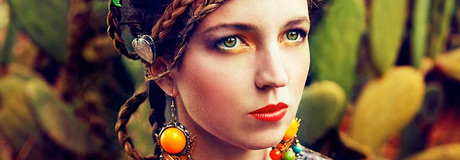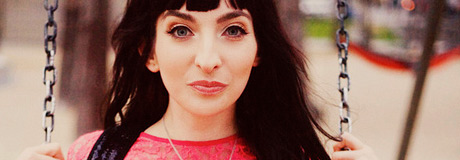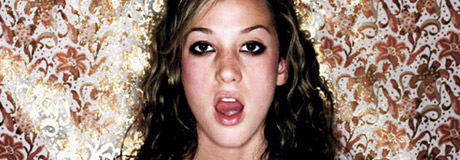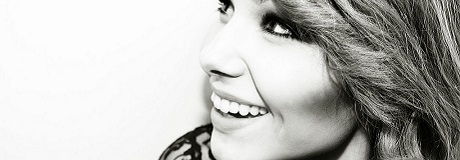Stuff-onomics: Hidden Side of What You Own
 Photo by
Cindy Loughridge
Photo by
Cindy Loughridge
Coming back from India, I feel like a different person. Not because of India, or that this is the cliché thing to say, but because I’ve been so out of touch with my old reality that I see my old life with a drastically different perspective. On top of being away for 3 months, I’m starting a new job and we are planning to move to another country later this year. Sitting here amongst all my things packed in 50 boxes retrieved from storage, it feels as if someone had pressed the “restart” button on my life.
It’s exciting, it’s scary, it’s surreal, and it’s so damn liberating. Gosh, it’s good to be home!
I’ve learned so many life lessons in the past few months, and I’ll start to share them with you over time. But the biggest lesson I’ve learned is how little we actually need. How little we need in order to be happy.
After traveling for several months in one bag: two pairs of pants, a few shirts, a jacket, several books, and my iPod (which I used once)…. Coming home to 50 boxes full of Stuff, it felt like my world was once again being weighed down by things I didn’t need. It felt as if the things will consume more of me than I will ever consume of it. Thus, my new project: to simplify my life… starting with Stuff.
Why We Collect Stuff?
“How little we actually need in order to be happy.”
This isn’t news. You knew that, and I did too. But why was it that I couldn’t part with those DVDs I will never watch again? Or, books I’ll never read? Or, clothing that I’ll never wear?
It is the stuff in our lives which we become attached to, because they give us a sense of self, a sense of identity. And by removing them, despite the clutter they cause in our inner space, it will feel as if someone is taking away our identity. It hurts the ego on a subconscious level.
Why do we collect stuff to begin with? For me, I collected stuff, because I wanted my life story to fit a certain persona and I collected stuff that would back up that story. For example, I wanted to be viewed as an artistic person, so I collected art books, photography collectables, and art works. They are displayed throughout my home, so that when I have visitors, they can see that I am indeed an artistic person and validate my story. Similarly, when I was heavily into technology, I wanted to be viewed as a highly technical person. I bought tech books and studied them so that I too could speak the lingo and fit in with my colleagues. These were my stories, but perhaps you can relate?
After playing the part of several personas, I have become the person I am today. What changed is that I reached the point where I was so full of stuff that I didn’t have room for any more. I have played the parts of an artist, an engineer, a fashion diva, a music collector, a dancer, a snowboarder, and an intellectual book worm. All these personas left me with more stuff than I need or even want. The physical stuff clutters my living space and the sense of peace I feel in my inner space. This state follows a quote I once heard: “Your outer world is a reflection of your inner world.”

The Sadus of India are pretty content with life, yet they own very little stuff. They carry all their possessions in light cotton bags. “… the biggest lesson I’ve learned is how little we actually need. How little we need in order to be happy.”
Why We Should Let Stuff Go?
Removing excess baggage will give us peace of mind, clarity and liberty.
We are not slaves to the stuff we own. We are the masters of our lives and the creators of our stories.
Learning to Let Go
If your house was on fire and you lost all your stuff, what would you miss most? If you had to move to a smaller apartment and needed to cut your stuff in half, what can you let go of? If you had to move across the country on a limited budget, what would you take with you? For everything else you’re leaving behind, perhaps they are not adding to your wellbeing anyway?
Moving is a great opportunity to practice letting go, since the process of packing forces you to realize how much you own. The more we can get rid of, the less we’ll need to carry around with us. Even when we don’t make drastic changes to our living location, it is still a therapeutic experience to periodically remove stuff we no longer need. Good questions to ask are: when was the last time I used this? Will I use it again? Will I use it often?
Make it an annual project to sweep through all that you own and see what you can remove. Just for fun, let’s call this the ‘Stuff Reduction Project’. Here’s what I did to give you some ideas.
First, select categories of stuff that will be included in your ‘Stuff Reduction Project’. For me, they were:
- Clothing – especially Shoes and Jackets
- DVDs
- Music CDs
- Books
- Kitchen Supplies
- Household Supplies – including cables, power extensions and blank CDs
- Bathroom Supplies
- Pet Supplies
- Magazines
- Office Equipment
Each category is given 3 hours max and treated like an assignment. Try to spread the assignments out and don’t try to do too much in one day.
Start tackling each assignment with several empty boxes, or leave enough room on the floor for several sorting categories:
- Yes – Stuff I’m keeping with no pending action.
- No – Stuff I’m not keeping, but I don’t want to throw away.
- Maybe – Stuff I’m not sure about. I want to keep it, but also can do without.
- Garbage
- Recycling
- Todo – Stuff I’m keeping that has a pending action or needs special attention. Examples: Papers to file, empty CD cases where the CDs needs to be recovered, ripped clothing that needs mending, shirts that needs to be hand washed, folders I need to further sort through in detail.
For each assignment, follow these steps:
- Sort As Fast As Possible – Go through everything within the assignment category and quickly make a decision of where it should go: Yes? No? Maybe? When was the last time you wore that shirt? If it was more than a year ago, consider giving it away. How many times have you watched that DVD? Will you ever watch it again? Consider letting it go. Was the item too expensive to just toss away? Sell it and get some money back. For anything you haven’t used in a year, consider putting it in the No or Maybe bin.
- If Yes – does it have pending action? If so, put it under Todo.
- Put Yes’s Away – Take all the items under the Yes category and further sort them if necessary. Put them away in orderly fashion. Make sure everything has a home, so you know where to put things back after using it in the future.
- Sort No’s – Will someone else want this? Can I sell it or donate it? Is it garbage? Can it be recycled? Break up the items you don’t want into additional categories if appropriate. In this way, you give each item an actionable next step. Some additional categories are:
- Sellable – I even go as far as breaking items in Sellable into where I’ll be listing them: Amazon.com, Ebay, local listings such as Craig’s list.
- Give Away to Friend – Put a yellow sticky or attach a note with the recipient’s name.
- Donate – If you plan to give different things to different charities or organization, do the sorting now. Example, while sorting, I separated new and business clothing for Dress For Success, and all other clothing goes to Salvation Army.
- Tending the Todo’s – If the Todo items can be quickly addressed, deal with them right away. Otherwise, put them in a box and handle them over time.
- Take Out the Trash – It is super rewarding to take out a large amount of garbage and recycling after filtering through your house. After sorting through all my paper works, I recycled two moving boxes full of paper & plastic, and two bags of garbage.
- Sell the Sellables – If you have time to list and sell items online, do it right away. It’s best to sell multiple things at once, instead of one at a time, so you can take advantage of batching and minimize trips to the post office. If things don’t sell in a given period of time, give them away in your donations box or to friends. (I have listed over 150 items and more than half have been sold. Here are some things I have remaining for sale.)
- Move Out the Donations – Bring your donation boxes to your charity of choice. This too is super rewarding. For me, after moving 10 boxes of unused clothing, books and household supplies out of my house, what felt like big weights lifted out of my shoulders. My closet is now organized and minimal, and I can finally breathe again.
Ideas for Keeping Your Stuff Under Control
I know how difficult it can be to part with your stuff, even if we’ve never used it or will ever use it again, we save it for that day, when it might become useful, except that day may never come. Often times, I’ve kept stuff I’ve never used, simply because I’ve spent good money on it and felt bad for tossing it. As a result, the stuff ends up owning me instead of me owning it.
The following are some ideas for keeping your unused possessions to a minimum.
- Re-Gift Box – I’ve told my friends and family not to buy me anymore stuff on birthdays and holidays, instead to give me something of theirs which I might be able to utilize or nothing at all. Consider setting aside a Re-Gift Box in a linen closet or dresser for things you no longer wish to keep and can make great gifts. Great choices include decorative objects of value with no apparent use, books you’ve really enjoyed but will not likely read again, home electronics still in great shape, picture frames which can be easily re-gifted with a meaningful picture. Re-gifting box is not the same as the Donation Box, only put useful or meaningful things that you’d feel comfortable giving away to friends. Re-gifting is not being cheap, it’s a practical and environmentally friendly way of re-cycling stuff by giving it a home where it can be utilized. For example, a friend of mine needs a DVD burner to back up his wedding photos, and I happen to have an extra one lying around in excellent shape. I plan to give it to him on his birthday in a month along with some blank DVDs.
- The Buying & Giving Rule – Try the ‘rule’ to allow yourself to buy something new only when you can remove something you already own. For example, only buy a new shirt if you’re willing to put an old shirt in your donation box. Similarly, only buy a new CD, if you’re willing to give away or sell another CD.
- Scheduled Sweep – Schedule periodic appointments with yourself to sweep through certain sections of your house.
- Ask Questions Before Buying – Most stuff accumulation are the result of impulse buys. I am are guilty of this and have found it helpful to ask some simple questions when I feel the urge to buy. Do I need it? How many similar items do I already own? How often do I use them?
- Waiting Period Before Buying – When you feel the urge to buy something unessential, try giving yourself a waiting period of a few days or weeks before buying it. Often times, you’ll find that you no longer need the item as you had initially felt.
- Box it. Date it. Toss it. – For stuff that you don’t want to throw away, yet have no immediate needs for. Put them in a box, close it and date the box that’s one or two years from today. Store the box in an attic or closet. Annually check on these boxes, when the date have passed, donate the box without looking to see what’s inside. If you don’t know what’s inside and haven’t used it in over a year, likely it’s not something you need anyways. And by not looking what’s inside, you won’t get attached to these things you don’t need in the first place.
Don’t expect to get rid of everything in one sweep, it’s a step process of letting go and it’s okay to keep a few things from your Maybe pile. I still have a hard time letting go of some things, but with each Stuff Reduction Project, I get better at detaching and end up removing more clutter. Expect to do several sweeps over the next few years. It takes patience, determination, courage and practice to eliminate the unnecessary clutter of unused stuff in your life. You’ll love the sense of freedom once you’re done.
Do you have tips for reducing the unnecessary stuff in your life? Talk to us in the comments. See you there!













Very nicely written article with lots of practical ideas. It certainly is easy to fall in the trap of being increasingly being owned by all your things. It seems to be a lifelong challenge to find the sweet spot where you have the accouterments that support your talents and vision, but aren’t spending all kinds of time maintaining, sorting, and checking up on your stuff at the expense of just being.
Thanks for this nice piece.
Great post. It resonates like a bell with the downsides of the American dream, which dream needs a little rethinking. I have a related post about ‘stuff’ and happiness at http://www.diamondcutlife.org/the-peak-of-happiness-and-its-causes/.
I started this project last night. And its true, when trying to declutter I felt bad throwing things out and kept on thinking to myself “But what if…”
However afterwards I was so happy with what I had done! So much room in the closets!
Theres some really good tips here., I’m looking forward to trying them during my next project.
The only things I own are: my laptop, my clothes, and some sentimental things.
I had to sell all my stuff, several times in my life. It feels good every-time I do. It feels like a release. It helps me realize that I am not defined by what I own. My possessions are not me. And it helps me to focus on what matters in life.
Thank you Tina!
Hi Tina,
I just discovered your blog recently as I was looking for ways to develop my own site. I really enjoy your writing.
I have been going through my own process of decluttering stuff, and letting go. I’m about to drop off 5 huge garbage bags of old clothes that don’t fit anymore as I have lost a lot of weight.
I’ve have always thought and practiced the art of letting go of material goods, relationships, jobs, etc. that don’t serve me anymore. When I do something better always appears in the near future. Thanks for the reminder and practical advice. We really don’t need that much stuff to be happy and fulfilled.
My tip for clearing out the more sentimental stuff is to take photos of the object so that you’ll at least always have a visual representation of what it was to bring all those memories and feelings back to the present. I’ve used this on stuffed animals, home decor I’ve grown tired of, travel souvenirs, etc. Give it a try! Better yet, have a photographer friend have some fun with it and ask for the photos to keep.
I was inspired by this post to clean out my closet and donate bags of clothes to my local charity center Sacred Heart.
http://twitter.com/loveurmindnsoul
i like this thought… i have very collective nature, i want to keep everything, if i open a new soap, bulb, gift, i want to keep that cover box in future use… which sometime use or mostly add space in store.
“Possession isn’t nine-tenths of the law. It’s nine-tenths of the problem.” -John Lennon
Hey Tina,
The less things you have, the more time you have to enjoy them – and life.
You only have a limited amount of time, space, and energy throughout the day. The more things you have, the less you can enjoy each of them. By clearing out your stuff–and by extension, life–to the essentials, the more you can maximize your day, your enjoyment, your life.
Plus, it’s easier psychologically and physically to move around and use your things. If you only had a small handful of clothes you absolutely love in your closet, it’s easy to get dressed in the morning; you don’t have many choices, and each item is amazing, so you can’t go wrong.
I love how you stated the hidden side of what you own. You don’t just physically have things around you: they eat at your day, your thoughts, your time, your energy. Take back your resources, and put them into what’s really important to you: maximize life.
Whittle down your possessions to what’s really important to you. What really makes you happy or is necessary? Chances are, most stuff you own isn’t essential. If you can clear your life of them, you’ll have newly-freed resources to enjoy the things you do love even more – and go live life more too.
Thanks for the great reminder of the hidden cost of owning stuff, and the importance of owning only the essentials (what makes us truly happy or provides important functionality),
Oleg
I have to agree with the article. I spent more than a year in Africa
“stuff reduction” is something I have been working on extensively. I recently downsized and I realized how much junk I had lying around. A waste really.
this article is very “zen”.. but its so true. The media parades so much stuff before our eyes and do a great job of brainwashing us into thinking we cannot live without it. But in reality, what do we really need in life? Food, Shelter and Clothing are the basic necessities of living. Its possible to be happy without much else, happiness does not result from the things that we have, but rather from within ourselves and our outlook on life.
The media parades so much stuff before our eyes and do a great job of brainwashing us into thinking we cannot live without it. But in reality, what do we really need in life? Food, Shelter and Clothing are the basic necessities of living. Its possible to be happy without much else, happiness does not result from the things that we have, but rather from within ourselves and our outlook on life.
Hi Tina,
I dnt knw hw 2 start,but ur articles r wonderful like nothing…hw can u think and put things so beautifully?
u knw wht ur arcls were blessing to me frm God,ths z wht i thought those days,,,coz thy gav me hope …lot mr than anything…
whn i was left aln 2 study (whn my frnds were bsy wth thr works) it was lik TSN was my best frnd…coz ur writings were perfectly fit 2 me..love u alot Tina..i include u n my prayers… :-) tc
Wow! “It felt as if the things will consume more of me than I will ever consume of it.” I am always simplifying, so appreciated those words for myself, too, but they really reminded me of a friend. Must tell him.